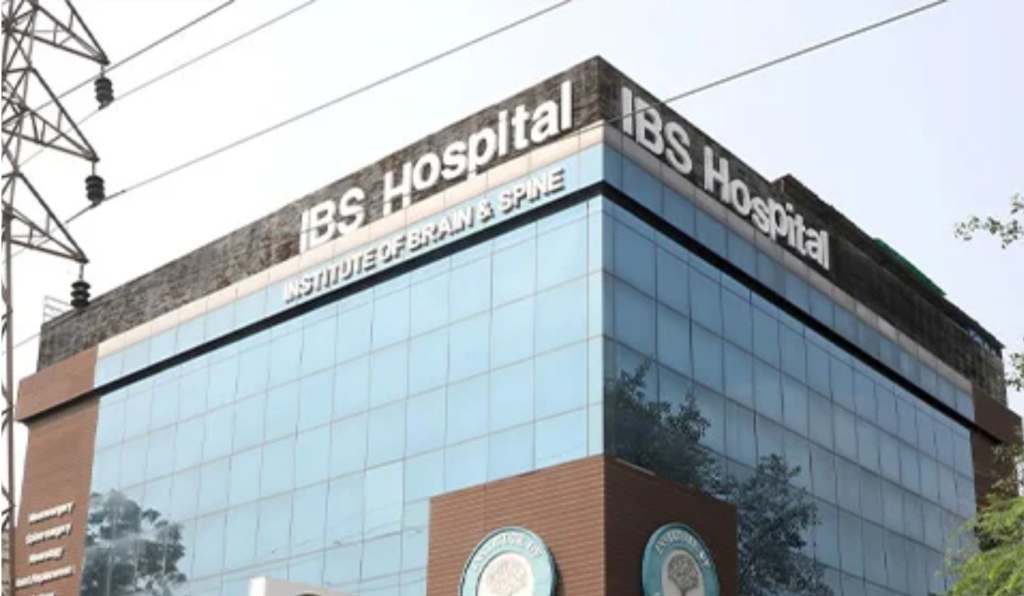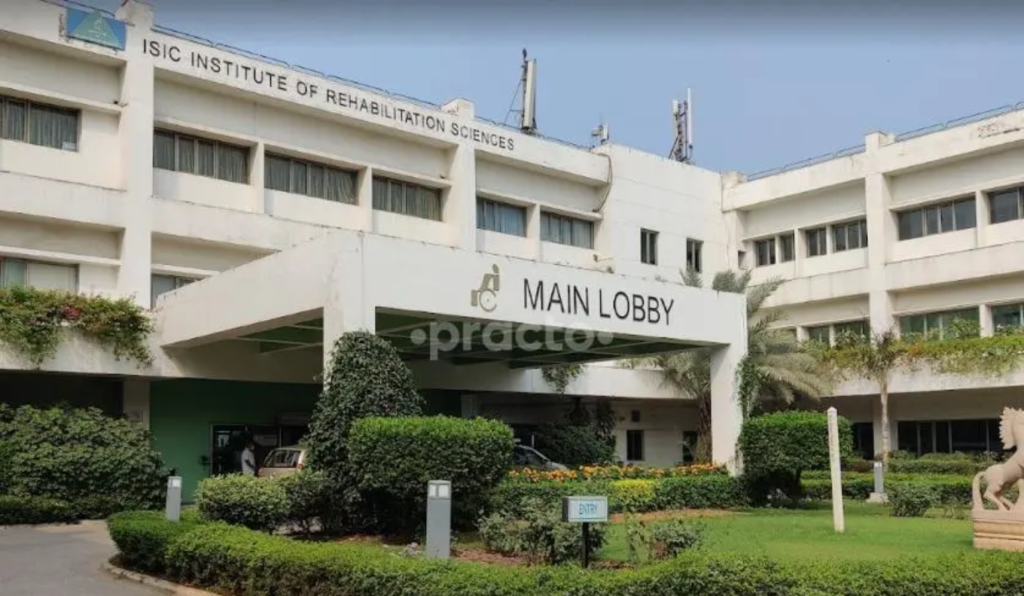Carpal Tunnel Syndrome & Nerve Compression Disorders Treatment Cost in India

What is Carpal Tunnel Syndrome & Nerve Compression Disorders?
Carpal Tunnel Syndrome (CTS) is a condition where the median nerve is compressed as it travels through the carpal tunnel in the wrist, leading to numbness, tingling, and weakness in the hand. Nerve compression disorders can also occur in other areas, such as the cubital tunnel (ulnar nerve) or thoracic outlet (brachial plexus).
This category includes radial tunnel syndrome, tarsal tunnel syndrome, and peripheral neuropathies caused by repetitive strain, inflammation, or injury. Early diagnosis and ergonomic interventions are key to preventing permanent nerve damage.
How Does Carpal Tunnel Syndrome & Nerve Compression Develop?
Carpal Tunnel Syndrome (CTS) and other nerve compression disorders develop when surrounding tissues press against peripheral nerves. In CTS, repetitive wrist motion or prolonged pressure causes inflammation and narrowing of the carpal tunnel, compressing the median nerve. This leads to symptoms like tingling, numbness, and hand weakness.
Other nerve compression disorders, such as cubital tunnel syndrome or sciatica, develop due to chronic mechanical pressure, anatomical variations, or inflammation. Over time, the pressure disrupts nerve function and causes tissue damage. Conditions like rheumatoid arthritis, diabetes, or hypothyroidism may exacerbate or accelerate nerve compression by contributing to swelling or nerve susceptibility.
Causes and Risk Factors of Carpal Tunnel Syndrome & Nerve Compression Disorders
Carpal Tunnel Syndrome (CTS) and other nerve compression disorders occur when nerves are compressed or pinched, often in areas where they travel through narrow anatomical passages. These conditions can gradually develop due to repetitive motion, anatomical variations, or underlying health problems.
Repetitive Hand and Wrist Movements
Prolonged or repetitive use of the hands and wrists is one of the most common causes.
- Typing or computer use for long hours without ergonomic support strains the median nerve.
- Assembly line work or jobs involving hand tools create cumulative stress.
- Repetitive sports movements like cycling or racquet sports can aggravate nerve pathways.
Anatomical and Structural Issues
Individual anatomical differences or physical changes can narrow nerve pathways and cause compression.
- Small carpal tunnel diameter, present from birth, raises the risk of CTS.
- Bone fractures or arthritis can deform joints and pinch nearby nerves.
- Cysts, tumors, or swollen tissues may press on nerves in tight spaces.
Medical Conditions and Lifestyle Factors
Certain health conditions and lifestyle choices increase susceptibility to nerve compression.
- Diabetes, hypothyroidism, and rheumatoid arthritis contribute to nerve inflammation and damage.
- Pregnancy can cause fluid retention and tissue swelling, compressing the median nerve.
- Smoking and obesity impair blood flow, increasing nerve vulnerability.
Symptoms of Carpal Tunnel Syndrome & Nerve Compression Disorders
Carpal Tunnel Syndrome (CTS) and other nerve compression disorders manifest through a combination of sensory and motor symptoms, primarily affecting the hands, arms, or other nerve-specific regions. These symptoms often worsen over time if left untreated.
Tingling and Numbness
Early signs usually include unusual sensations in the affected area.
- A pins-and-needles feeling or tingling in the fingers, especially the thumb, index, and middle fingers.
- Numbness, particularly during activities or while sleeping.
- Symptoms often worsen at night or after repetitive hand use.
Pain and Weakness
Progressive compression can lead to pain and diminished motor control.
- Burning or aching pain that may radiate to the forearm or shoulder.
- Muscle weakness, particularly in the hand grip or thumb.
- Frequent dropping of objects due to reduced hand coordination.
Specific Nerve-Related Symptoms
Depending on the nerve involved, symptoms can vary in location and intensity.
- Ulnar nerve compression may cause numbness in the ring and little fingers.
- Radial nerve compression can lead to wrist drop and weakened hand extension.
- Some people experience clumsiness in fine motor tasks, like buttoning a shirt.
Types of Carpal Tunnel Syndrome & Nerve Compression Disorders
Nerve compression disorders, including Carpal Tunnel Syndrome, involve the entrapment or pressure on a nerve, typically in narrow passages like the wrist, elbow, or spine. These disorders can affect both the central and peripheral nervous systems, leading to pain, weakness, or numbness. Understanding the different types helps in pinpointing the site and cause of compression, ensuring targeted treatment and better outcomes.
Carpal Tunnel Syndrome is the most common nerve compression disorder, caused by pressure on the median nerve within the wrist. It leads to tingling, numbness, and weakness in the hand, especially in the thumb, index, and middle fingers. CTS is often triggered by repetitive hand movements, poor wrist posture, or underlying health issues like diabetes and thyroid disorders. Early diagnosis is important to avoid permanent nerve damage.
This condition arises when the ulnar nerve is compressed at the elbow, particularly within the cubital tunnel. It leads to numbness and tingling in the ring and little fingers, often worsening when the elbow is bent for long periods. Cubital Tunnel Syndrome is the second most common nerve entrapment in the arm and can lead to hand weakness if untreated. It commonly affects people who lean on their elbows or work in repetitive elbow-bending tasks.
Radial Tunnel Syndrome involves compression of the radial nerve in the forearm, resulting in dull aching pain along the top of the forearm and hand. Unlike Carpal Tunnel Syndrome, this condition typically doesn’t cause numbness or tingling. It’s often misdiagnosed as tennis elbow due to the similarity in symptoms. The condition is typically aggravated by forearm activity and requires a different therapeutic approach than other nerve compressions.
Tarsal Tunnel Syndrome – Compression of the tibial nerve near the ankle causing foot pain or numbness.
Thoracic Outlet Syndrome – Involves nerve or blood vessel compression between the collarbone and the first rib.
Peroneal Nerve Compression – Causes foot drop and is common near the knee.
Suprascapular Nerve Entrapment – Affects the shoulder, often due to repetitive overhead movement.
Which Type of Carpal Tunnel Syndrome & Nerve Compression Disorder is the Most Dangerous?
Severe Carpal Tunnel Syndrome with Permanent Nerve Damage is considered the most dangerous form. When left untreated for an extended period, the median nerve can suffer irreversible damage, leading to chronic pain, muscle wasting in the hand, and significant loss of function. In extreme cases, this may result in permanent disability, making even basic hand movements difficult or impossible.
Why Choose India for Orthopaedic Treatment?
India has emerged as a global hub for advanced orthopaedic care, attracting thousands of international patients each year. With a unique blend of medical excellence, cutting-edge technology, and cost-effective treatment, India offers unmatched advantages for those seeking relief from joint disorders, spinal conditions, fractures, nerve compression syndromes, and more. Whether it’s a complex surgical intervention or conservative therapy, patients receive world-class care tailored to their individual needs. Here’s why India stands out as a preferred destination for orthopaedic treatments.
India is home to some of the most experienced and internationally trained orthopaedic specialists. Many surgeons have trained in top global institutions and bring extensive expertise in managing complex cases—ranging from osteoarthritis and fractures to congenital and developmental bone disorders.
Indian hospitals offer state-of-the-art facilities equipped with cutting-edge imaging, robotic surgery, arthroscopy units, and minimally invasive surgical technologies. Dedicated orthopaedic departments ensure focused treatment for ailments like spinal disorders, ligament tears, and bone density issues.
India offers world-class orthopaedic care at a fraction of the cost compared to Western countries. Treatment plans—including surgery, rehabilitation, physiotherapy, and follow-ups—are bundled into affordable, transparent packages, making high-quality care accessible to international patients.
Unlike many countries where patients face long waiting periods for orthopaedic procedures, India ensures prompt consultations, diagnostics, and surgeries. This significantly reduces disease progression and enhances recovery outcomes.
India is a global leader in medical tourism, offering:
✔ Dedicated international patient coordinators
✔ Medical visa assistance for easy travel
✔ Affordable accommodation & travel support
✔ Multilingual staff, including English-speaking doctors
This ensures a smooth and hassle-free experience for foreign patients traveling to India for treatment.
Indian hospitals emphasize treatment and post-operative rehabilitation. Personalised physical therapy plans, nutritional counseling, and long-term follow-up care help restore mobility and improve overall quality of life after treatment.
Different types of Treatments for Carpal Tunnel Syndrome & Nerve Compression Disorders
Carpal Tunnel Syndrome and other nerve compression disorders can often be effectively managed with non-surgical interventions when diagnosed early. These treatment options are designed to relieve pressure on the affected nerve, reduce inflammation, and restore functionality. The right approach depends on the severity, duration of symptoms, and patient lifestyle.
How It Works:
Wrist splinting involves using a brace to keep the wrist in a neutral position, especially during sleep. This minimizes pressure on the median nerve and helps reduce symptoms like numbness and tingling. It’s a first-line conservative treatment for mild to moderate cases.
Stabilizes the wrist to prevent nerve compression
Encourages proper wrist alignment
Reduces nighttime symptoms effectively
When It’s Used:
Early stages of Carpal Tunnel Syndrome
During sleep or repetitive wrist activities
As a preventive measure for high-risk individuals
Benefits:
Non-invasive and easy to use
Provides symptom relief without medication
Can delay or avoid the need for surgery
How It Works:
NSAIDs help reduce inflammation and pain associated with nerve compression. These medications do not cure the disorder but can offer temporary symptom relief, especially when inflammation is a contributing factor.
Decreases inflammation around the nerve
Reduces mild to moderate pain
Improves hand function temporarily
When It’s Used:
Short-term management of acute flare-ups
In conjunction with other therapies like splinting
When inflammation is a major component of symptoms
Benefits:
Easily accessible and affordable
Useful for initial symptom control
Can enhance the effectiveness of physical therapy
How It Works:
Corticosteroids, either oral or injected, provide potent anti-inflammatory effects that reduce swelling around the nerve. Injections directly into the carpal tunnel can deliver rapid symptom relief in more severe or persistent cases.
Decreases swelling around the median nerve
Interrupts the cycle of inflammation and compression
Provides fast and localized relief
When It’s Used:
Moderate to severe symptoms not responding to NSAIDs
Patients who are not immediate candidates for surgery
To postpone surgical intervention in borderline cases
Benefits:
Strong and targeted inflammation control
Can improve hand function within days
Helps assess if surgery might be beneficial
How It Works:
Physiotherapy for Carpal Tunnel Syndrome focuses on nerve gliding exercises, wrist mobilization, and ergonomic adjustments. These techniques improve nerve mobility and reduce pressure within the carpal tunnel over time.
Strengthens surrounding muscles and tendons
Improves wrist mechanics and nerve mobility
Corrects contributing biomechanical issues
When It’s Used:
Mild to moderate cases of nerve compression
As part of post-operative rehabilitation
In conjunction with splinting or medication
Benefits:
Long-term functional improvement
Reduces recurrence when combined with lifestyle changes
Empowers patients through self-management strategies
Different Procedures for Carpal Tunnel Syndrome & Nerve Compression Disorders
When non-surgical treatments are not effective in relieving nerve compression symptoms, surgical procedures become necessary. These aim to decompress the affected nerve, restore normal sensation, and prevent further damage. The following are the most commonly used procedures:
How It Works:
This procedure involves cutting the transverse carpal ligament to relieve pressure on the median nerve. In the open method, a larger incision is made at the base of the palm. In the endoscopic method, one or two small incisions are used with a camera for visualization.
When It’s Used:
When symptoms persist beyond 6 months despite conservative treatment
In cases of severe pain or muscle wasting
For patients with nerve conduction study evidence of significant compression
Benefits:
Rapid and lasting symptom relief
Minimally invasive endoscopic option offers quicker recovery
Prevents permanent nerve damage if done early
How It Works:
This procedure involves relocating the ulnar nerve from behind the medial epicondyle of the elbow to a new position to relieve pressure and stretching, typically done in cases of Cubital Tunnel Syndrome.
When It’s Used:
Chronic ulnar nerve compression
Numbness and tingling in the ring and little fingers
Elbow pain worsening with prolonged flexion
Benefits:
Reduces nerve irritation and pain
Restores sensation and hand strength
Lowers risk of further nerve injury
How It Works:
This technique uses small incisions and specialized instruments to remove compressive tissue or bone around the affected nerve without extensive dissection.
When It’s Used:
Mild to moderate nerve compression
Patients needing faster recovery
Multiple nerve compression sites requiring treatment
Benefits:
Less postoperative pain and scarring
Shorter hospital stay
Faster return to work and normal activities
How It Works:
Utilizes robotic-assisted systems with high magnification and precision to perform delicate nerve decompression surgeries, especially in complex or recurrent cases.
When It’s Used:
Revision surgeries or complex nerve entrapments
Procedures requiring extreme precision
When preserving surrounding structures is critical
Benefits:
Superior accuracy and control
Reduced complication rates
Enhanced visualization of nerve pathways
Best Doctors for Carpal Tunnel Syndrome & Nerve Compression Disorders Treatment in India
Best Hospitals for Carpal Tunnel Syndrome & Nerve Compression Disorders Treatment in India
Med Travel India Offerings
How does Med Travel India help you?
Med Travel India is dedicated to assisting international patients in accessing high-quality Orthopaedic treatment in India. We ensure a seamless medical journey from selecting the best hospitals to providing logistical support. Our team works closely with top doctors and healthcare facilities to offer personalised treatment plans tailored to each patient’s condition.
We take care of every aspect of medical travel, allowing patients to focus solely on their recovery. Below is a list of services provided by our company:
Services offered by Med Travel India

Seamless Planning for Your Medical Journey
Before you even arrive, we take care of all the groundwork. From connecting you with top specialists to ensuring all necessary medical evaluations are completed, we make your journey stress-free. Our goal is to provide clarity and comfort before your treatment begins.
- Free Medical Consultation
- Personalized Treatment Plan
- Estimated Cost & Duration
- Visa Assistanc
- Second Opinion Service
- Pre-Arrival Coordination
Worry-Free Travel & Comfortable Stay
We ensure that your journey to India is as smooth as possible. From booking your flights to arranging a comfortable stay near your hospital, we handle everything so you can focus on your health.
- Flight Booking Assistance
- Accommodation Booking
- Airport Pickup & Drop
- Language Interpretation Services
- Local Transport Arrangements
- Currency Exchange Support


World-Class Medical Care, Personalized for You
We ensure that your medical treatment is well-organized and efficient. Our team works closely with hospitals to facilitate smooth admissions, consultations, and procedures, ensuring you receive top-quality healthcare.
- Priority Appointment Scheduling
- Direct Hospital Admission
- Specialist Doctor Assignment
- Pharmacy & Medical Supplies
- Hospital Admission & Discharge Support
- 24/7 Customer Assistance
Continued Support for a Speedy Recovery
Your health journey doesn’t end after treatment. We provide post-procedure assistance to ensure a smooth recovery, whether you stay in India for rehabilitation or return home.
- Post-Surgical Care Coordination
- Rehabilitation & Physiotherapy
- Virtual Doctor Consultations
- Diet & Lifestyle Guidance
- Extended Stay Arrangements
- Post-treatment Medical Supplies


Beyond Healthcare, A Comfortable Experience
We offer additional services to make your stay in India comfortable and enriching, ensuring that your well-being is cared for beyond the hospital.
- Medical Insurance Settlement Help
- SIm Card Assistance
- Customized Sightseeing Tours
- Medical Document Assistance
- Personalized Assistance for Family Members
- Concierge Services









































